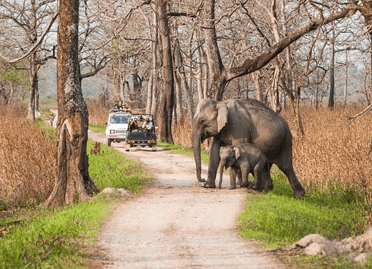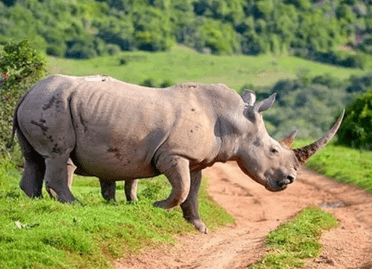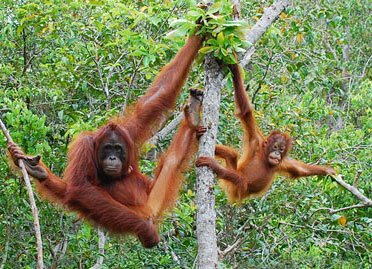Where am I : India Tour Packages » Most Popular Packages » Manas Tour Packages
View Details

Destinations Covered : Manas » Guwahati » Kaziranga » Nameri
View Details

Destinations Covered : Kolkata » Sunderbans » Manas » Guwahati » Kaziranga
Manas Tour Packages
Assam is full of natural beauty, and most importantly, it is known for its wildlife sanctuaries and nature parks. One of the most famous national parks in the country is none other than the Manas National Park, which showcases the beautiful one-horned rhinoceros. Besides that, the state is exquisite in itself, with exquisite local delicacies to eat and exquisite crafts to take home. On this exciting trip to Manas, the main focus is on the wild side, exploring the various wildlife sanctuaries in and around the state of Assam. So, get ready for an overwhelming adventure! Manas National Park is spread over a vast area in the state of Assam, India. Elephant Reserve, Biosphere Reserve, and Project Tiger Reserve area in the National Park.
Introduction to Manas
The name Manas National Park is derived from the Manas River, a major tributary of the Brahmaputra River. In October 1928, this National Park was declared a Wildlife Sanctuary, covering an area under 360 square kilometers. Manas National Park in Assam in India is most famous for its tiger reserve, rare golden langur, and red panda. It is also known for its environment, biodiversity with spectacular scenery, and natural landscape. Assam National Park is home to the second largest tiger population in India. Here tourists get to see a variety of forested hills, alluvial grasslands, and tropical evergreen forests. The Manas National Nature Reserve plays a significant role in protecting the country's natural resources, namely by implementing programs for the protection of tigers and rhinos, and elephants. It got its name due to the tributary of the Brahmaputra - Manas River flowing through its territory. In turn, this river was named after the snake goddess named Manas. Manas National Park, a jewel of the northeastern state of Assam, is nestled in the foothills of the Himalayas. This park serves as a government-recognized protection zone for many diverse species because its geographical, ecological, and environmental attribPark make it well suited to it.
The main area of ??the reserve is the Manas National Park. It is home to tiger, wild buffalo, and gaur, apart from sambar and marsh deer. The park mainly consists of eastern Himalayan Park mixed deciduous forest, sometimes dense enough to cut out all the sunlight. There are also alluvial pastures in the eastern part. The park is located in the watershed area of ??the Manas, Khakua, and Beka rivers.
Manas is classified as a World Heritage Site in Danger because the rebels in the area suffered heavily in the park. The poacherParkok advantage of the situation on a killing spree in Manas. There were many cases of arson, robbery, and murder, as well as poaching of elephants and rhinos for horns. Many villagParkre on the outskirts of the park. Project Tiger's report states, "Illegal cutting of trees for firewood and timber is common offshore." The Manas National Park in India is just a part of the protected area. The Manas River divides it into the Indian part and 60 thousand hectares belonging to the neighboring state of Bhutan. In India, the area of ??the park is 50 thousand hectares. Manas play an essential role in the protection of India's natural resources, as well as the protection of tigers, rhinos, and elephants. A significant population of them lives on its territory.
Exciting Facts about Manas National Park
National Parks in India refers to an area protected for the conservation and betterment of wildlife and biodiversity. And activities like poaching, hunting, development, grazing, etc., are not allowed. Furthermore, its boundaries are well marked and distinct. And the Manas National Park is spread over the Chirang, Darang, Kokrajhar, Udalguri, and Baska districts of the state of Assam. Here you will know some facts about Manas National Park:
- It is an essential and famous national park located in the northeastern state of India, Assam.
- Manas National Park is famous for the beauty of natural beauty, fauna, and flora.
- You can enjoy a safari through a jeep and canter in the park.
- Manas National Park has been given the status of a UNESCO World Heritage Site.
- This park has spread over an area of ??950 square kilometers.
- The most widely spoken language in the park is the Bodo language.
Manas National Park is also appreciated for its conservation park and is, in fact, a wildlife site in India, home to species such as the roof turtle, the herd hare, the golden langur, and the pygmy hog. Various excursions are organized in the park, for example, jeep safaris or trips deep into the park on the back of a tamed elephant. You should take a camera with you to capture the park's beauty.
Manas National Park - beauty in danger
Nighttime rumbles envelop the goons around the twilight trees in front of Bunsbury Mansion at the Manas National Park and Tiger Reserve entrance. In the gray predawn light, they look like the ruins of an ancient city. An armed guard takes his seat next to the driver; the jeep starts with a tubercular rattle. The silk cotton trees have dropped their bloody flowers on the forest floor so that the jeep drives over carpets of petals; a peacock flies into a branch, silhouetted against the cold white sun rising through the mist. In the distance, across the Manas River, the blue hills of neighboring Bhutan loom. Rhinos swim around the city; the elephants feed silently at the edge of the trees; they whirr insects in the evening. This is classic tiger country, with dense undergrowth thick with moss and vines crowned with lagoon capers, open grasses through which deer and lentils rampage, and a river and streams that provide drinking holes in which huge wild water buffaloes with rolls with long meters.
It is said that there are 80 plus tigers in this 391 sq km, making it the tallest tiger in any Indian game reserve. But today, this figure is just a guess. Manas is just now emerging from decades of multiple traumas such as flooding, rebellion, and neglect. Chaos and corruption have allowed poachers to wipe out the rhinoceros population; the jeep safari paths fell into such disrepair that only one is still functional. You think it might get boring, but each of our six journeys along this path is different in terms of weather, light, and time of day. As soon as the sun becomes a peach-pink ball behind a veil of cloud, one day - golden; one twilight makes the monkeys of our eyes. At night, the lights of the jeep wrap around the forest, the trees grow in strange, twisting shapes from the road, the branches sticking out and passing upwards in the blooms of the stars.
No matter what you do, don't miss the elephant safari around Mathanguri, deep inside the park where the government keeps its Inspection Bungalow at a breathtaking point overlooking the rushing river and the cloudy Bhutanese hills. Starting at dark at 5 am, we move on an elephant-back through mossy undergrowth where creepers and stranglers grow like leaves, through groves of ox-trees with large dark leaves, through grasslands, along dry, Rocky River beds, up and down steep slopes, with hornbill’s overhead and sambar all about.
Mathanguri is the best place to stay in Manas for the true jungle lover. If you can put up with decrepitude on the inside, a gorgeous exterior will constantly pamper you. Beyond a bend in the river, tantalizingly out of reach, lies the summer palace of the King of Bhutan, apparently pursued by troops of the rare golden langur. The bungalow's glazed dining area makes it a place for devouring the packed breakfast our guides laid out. Cormorants glide through the sunny pink water at dusk, and I watch a pair of sambars hesitantly emerge from the forest on thin hooves to drink by the river. This area is characterized by its natural beauty, including a range of alluvial grasslands and tropical evergreen forests. Manas is known to be of exceptional importance within the protected areas of the Indian sub-continent, as well as important remaining natural areas where a large number of endangered species are found—survived with a sizeable population.
Manas Wildlife Sanctuary is famous for.
It is the only landscape in the world where pristine lowland grasslands are diverse. The merging of semi-evergreen forests and grasslands can be seen together in the Himalayan region of Bhutan. The biodiversity here is wealthy. The last population of the pygmy hog is found only in Manas Sanctuary. Manas Sanctuary is home to a large population of Royal Bengal Tigers and many other animals.
The main animals in Manas National Park
- Asian elephant
- Notice
- Reindeer
- Leopard
- Kappad Langur
- Assamese Maize
- Hoolock gibbons
- Sloth
- Hog deer
- Indian Rhinoceros
- Wild buffalo
- Indian garden
- Asian golden pussy
- Golden langur
- Barking deer
- Black panther
Birdlife: Manas Sanctuary is an ideal place to live for various unique birds. Manas house the world's largest population of the endangered Bengal Floriscan, and great hornbills can also be seen here.
Major bird species in Manas National Park
- Bengal Florican
- Jungle Fowls
- Brahmin swan
- Partridge
- Egrets
- Pelican
- Fishing eagle
- Serpent eagle
- Falcon Scarlett
- Itarsi Maggi Pie
- robins pied
- Horn bills
- Gray hornbills
- Harriers
- Osprey
- Herons
Vegetation:
Main vegetation types: Sub-Himalayan dry alluvial semi-evergreen forests in the northern parts, Eastern Himalaya, mixed moist and dry deciduous forests, Assam Valley semi Evergreen alluvial grasslands, which cover about 50% of the park. Initially, primarily dry deciduous forests lie along the river banks.
Main Attractions of Manas
Manas National Park is one of the prominent tourist places in Assam. This densely forested area is counted among the major national parks of India. Through this park, the Manas River, along with five other rivers, flows through the park. Tourists have to take a ticket to visit this park. Tourists will not be able to visit this national park without a permit. Tourists can enjoy jeep safaris in this national park.
Manas National Park River Bank
The Manas River is the largest river among the three other rivers in the Bhutan region. The river flows through two countries on the foothills of the Himalayas between southern Bhutan and India. Manas River is named after the Hindu deity Manasa. The length of this river is 367 km. The river flows from Bhutan to Assam and finally meets the Brahmaputra River at Jogighopa. There are two reserve forests around the river: Manas Wildlife Sanctuary and Shahi Manas National Park. Forest elephants, biosphere, and tiger reserves are the focus of the project. Manas National Park River Bank is very impressive.
The Summer Palace
The summer palace is situated near the Manas River. It is located in the Bhutan countryside of Manas National Park. Tourists get boat rentals to go to Bhutan. But he has to take permission in advance. To reach the Summer Palace, travelers have to walk one kilometer. And the way is guarded by the watchman.
Wildlife Found in Manas National Park
Many beautiful and rare species of flora are found in Manas National Park. Its name comes from the rich biodiversity of India. Regarding the fauna in the park, let us say that animals like Indian Rhinoceros, Pygmy Hog, Bengal Florican, and Wild Asian Buffalo are found here in the Grassland Biome. Apart from this, the second biome is the forest biome with animals like slow loris, sambar, capped langur, squirrel, great hornbill, and many more. Explain that 55 species of mammals, 380 species of birds, three species of amphibians, and 50 species of reptiles are found in the park, including the Indian elephant, Indian rhinoceros, Asian water buffalo, Indian tiger, leopard, Assamese macaque, black panthers, and barking. Animals such as deer are included.
Flora
The canton is crossed by the mountain range called Nhungañan that rises in the Andes; its flora is made up of humid forests. The vegetation surrounding it corresponds to the Tropical Humid Forest. It is characterized by the presence of tall trees, such as laurel, wax palm, Zambia, sande, tagua, and tangaré, which sometimes reach 30 meters in height.
Fauna
There are species of animals in danger of extinction, such as the spectacled bear, jaguars, ocelots, peccaries, and two typical rodent species such as guanta and guatusa, among other species of mammals, and a great variety of birds such as white herons, raven ducks, parrots, various species of parrots, partridges, mountain guans, some species of birds of paradise in humid areas, it also has a rich diversity of reptiles, highlighting snakes such as the false coral and the coral, the equiz snake, among other poisonous and non-poisonous species.
Bird Watching In Manas National Park
Manas National Park is a paradise for bird lovers. The main spots of this park for bird watching are Kokilabari and Albari. The park has the largest population of Bengal Florican birds and is home to about 500 varieties of birds. Birds found in Manas National Park include snake eagles, shyn, gray hornbills, mergansers, bulbuls, harriers, giant hornbills, brahminy ducks, pied hornbills, scarlet minivets, Kalij pheasant, and bee-eaters. You can see fishing eagles in large numbers in Kokilabari and Albari.
White Water Rafting At Manas National Park
Tourists can also enjoy rafting in Manas National Park. Travelers should enjoy white water rafting once. Due to the white water like milk, it has been named white water rafting. You have to spend money to enjoy rafting. Rivers are passing through the park. That is why tourists enjoy rafting very much.
Best time to visit Manas
To visit Manas National Park, October to April is the best months. Because the weather is pleasant, there is a chance to see many wildlife species. The national park experiences a semi-tropical climate. It has humid summers, cold winters, and heavy rainfall during monsoons. Tourists should avoid visiting here during the monsoon season. The park gets flooded due to heavy rains from June to September.
How to Reach Manas National Park
By Train
The nearest central railway station to Manas National Park in Guwahati. Barpeta Road is well connected by rail to major cities like Delhi, Mumbai, Chennai, and Bangalore. It is located about 44 km away. Taxis are readily available from Barpeta Road Railway Station to take you to the park.
By road
Manas National Park is well connected to many cities of Assam through good roads. Manas can be reached by road from Guwahati, Kaziranga, Darjeeling, Shillong, and Siliguri. If you want to travel by bus, then state transport buses connect the park with many cities of Assam and its surroundings.
By Airplane
The nearest airport to Manas National Park is Borjhar Airport, located in Guwahati. It is about 170 km from Manas National Park. Manas National Park is easily accessible by car from Guwahati Airport. After reaching Guwahati, you will get a taxi or cab to Manas National Park.
Conclusion
Manas is known for rare and endangered endemic wildlife such as roof turtles, herpid hare, golden langur, and pygmy hog. Mainly Manas is famous for its population of wild buffalo. In this post, we have given you essential information about Manas National Park, a UNESCO World Heritage Site listed in the northeastern state of Assam, India. If you have any questions or ideas about this exciting trip to Manas or want to get any other information, then definitely write in the comment box.
Speak to our Experts!
Instant Quote, Best Deals - 100% Customizable, Includes hotels + car + guides Cost depends on various factors like, number of people you are, travel dates, category of hotel and transportation etc.Drop your Inquiry to get the best deals as per your requirements. 100% Satisfaction Guaranteed. Rated 5* in TripAdvisor.




